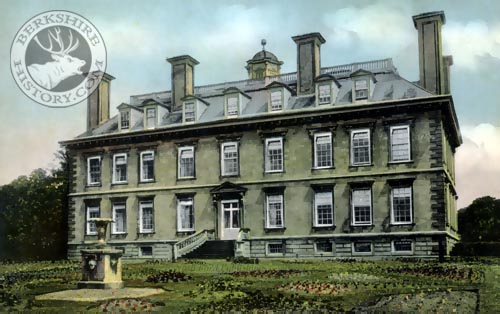 |
 |
|||
|
|
The charming village of Coleshill abounds in beautiful picturesque cottages. It has a fine church and it was once also home to a noble mansion, the chef d'ouvre of one of the best of English architects. In olden days, the manor belonged to the Edingdon family and was given by William de Edingdon, Bishop of Winchester, to the Priory of Bonnes-Hommes at Edington in Wiltshire. After the dissolution of that priory, it was given to Thomas, Lord Seymour, Lord Admiral of the Fleet, who secretly married Catherine Parr, the last of Henry VIII's many queens, and had the custody of the Princess Elizabeth and Lady Jane Grey. He wanted to marry the former, who used to dance and flirt with him, but fell out with and defied the power of Protector Somerset and, for his pains, was beheaded. The manor became the property of Anne, Duchess of Somerset, and then of Arthur Grey of Wilton. In 1601, Coleshill belonged to Sir Thomas Freake who sold it, in 1626, to Sir Henry Pratt, Alderman of the City of London, created a baronet in 1641. He died suddenly in 1647, one Sunday morning in church, and was succeeded by his son, Sir George Pratt, the second and last baronet. In the 1640s, Sir George began to build a new house for himself, near the village street, but, in 1649 at the end of the Civil War, he consulted with his cousin, Sir Roger Pratt, a student of architecture who was newly returned from a long stay in Italy. Sir Roger took over the work at Coleshill and designed a far grander up-to-the-minute building for a new site further up the hill. He sought the advice of the aging Inigo Jones concerning the ceilings and his associate, John Webb, submitted ideas for capitals and chimneypieces around 1650. Work ceased two years later, but Pratt recommenced building around 1658. Bills for chimneypieces and other details, dated 1660 and 1662 fix the date of the building's completion. The house was one of the finest works of the school of Inigo Jones, described by Nikolaus Pevsner as "the best Jonesian mid-17th cenutury house in England". It was in fact long attributed to the man himself on the testimony of a non-contemporaneous tablet in the house. Upon Sir George's death, his daughter and only surviving child, Mary, brought Coleshill, by marriage, to the Pleydell family. She married Thomas Pleydell of Shrivenham. This Pleydell family is an ancient one and had an estate in Coleshill which they inherited from the family which took their name from the place, and possessed this estate as early as the reign of Edward I. We constantly meet with William de Coleshill and other members of the family, occupying positions of trust and importance in the early records of the county. In the south transept of the church, built by Thomas Pleydell, there is a tablet showing his will and a genealogical account of the family. The elder branch of the Pleydells resided at Coleshill till the time of Queen Elizabeth, when Anthony Pleydell died without issue, and the younger Shrivenham branch inherited the estate. Thomas and Mary Pleydell were the grandparents of Sir Mark Stuart Pleydell, Bart., whose only daughter and heiress, Harriet, married the Hon. William Bouverie, Viscount Folkestone and Baron Longford, and afterwards created Baron Pleydell Bouverie of Coleshill and 2nd Earl of Radnor in 1765. Thus the names of Pleydell and Bouverie were conjoined and Coleshill manor passed to the Earls of Radnor. They lived there for nearly two hundred years. During the Second World War, the house was requisitioned as the training headquarters for the Auxiliary Units, the secret British Resistance in the event of a German invasion. After the War, the Earl of Radnor sold the property to Ernest Cook, grandson of the Thomas Cook, the famous travel agent. He had agreed to leave the house to eth National Trust upon his death, but, during substantial renovations in 1952, a painter using a blow-torch to remove paint from the dormer windows on the roof caught the house alight. The place was totally gutted by the fire in just a few hours. The sad shell was demolished in 1958. Like at Hamstead Marshall, only four pairs of mid-17th century gate piers now remain. Click for a full Description of Coleshill House Partly edited from P.H. Ditchfield's "Byways in Berkshire and the Cotswolds" (1920)
|
|||
| © Nash Ford Publishing 2001. Rev. 2017. All Rights Reserved. The location of this country house is now administered by Oxfordshire CC. | ||||



 Coleshill
House
Coleshill
House